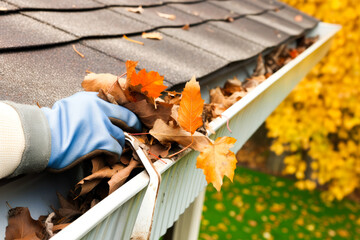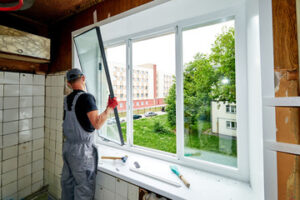The windows in your home may need replacement for several reasons. Cracked windowpanes, non-operational windows and rotting frames, sashes or sills are all good reasons to consider replacing your existing windows.

Before launching into your search for new windows, outline some basic goals and research questions. This will help you save time and find the right windows for your home. Contact Replacement Windows Massachusetts for professional help.
Unlike single-pane windows, energy-efficient replacement windows are architected to minimize heat transfer, which significantly lowers energy bills. Newer windows keep heat in during the chilly winter and hot air out during scorching summers, helping reduce your reliance on your HVAC system year-round. This means you will save on your utility bills now and in the long run.
Energy-efficient windows also have coatings that help minimize harmful UV rays entering your home, which can damage carpets and fade furniture. The coatings will help protect your family from the damaging rays while still allowing natural light to enter the room, making these windows a valuable upgrade.
If you’re thinking about replacing your windows, make sure to choose the Energy Star rated models to maximize energy efficiency. They are marked with a blue label that includes an R-value rating and a U-value rating. The higher the R-value number, the more effective the window is at insulating your home.
Another great benefit of replacing your windows with energy-efficient ones is that they reduce outside noise. The improved insulative properties of the replacement windows can help block out unwanted traffic, construction, and lawn mower noises, creating a more peaceful indoor environment for your family.
Upgrading your windows to energy efficient models is a smart investment that can increase the value of your home, especially if you choose double-pane insulated vinyl windows with aluminum frames and a green Energy Star logo. The Energy Star label is a very popular selling point among prospective buyers, and Remodeling magazine reports that this type of project yields one of the best return on investment in 2024. The initial investment in the windows will be quickly covered by the monthly savings on your utility bill.
Increased Home Value
New windows will enhance the overall look of your home. This can make your house more attractive to prospective buyers, especially if you’re considering selling it in the future. You can further increase your home’s appeal by choosing windows with a design that complements the style of your house. This will give your home a more uniform appearance and make it easier for buyers to envision their own furniture in the space.
Energy efficiency is another major selling point for potential buyers. New windows that are rated by Energy Star will save homeowners significantly on their utility bills. This can lead to a higher return on investment at the time of sale.
If you’re unsure about the cost of replacement windows, you can always consult with a real estate agent or professional contractor to get a better idea of how much you can expect to recoup on your investment. They can also help you find the right type of windows that fit your budget.
Aside from the financial benefits, there are many other reasons why replacing windows is a wise investment for your home. Newer windows have enhanced security features that can protect your family from intruders and unwanted visitors. They also come with advanced locking mechanisms that can make your home safer.
If you’re thinking about upgrading your windows, don’t hesitate to contact DaBella for expert recommendations and high-quality options that can fit your needs. They can help you choose the best option for your home and provide professional installation services. For more information, call them today at 844-DaBella. They also offer a wide variety of window types and frames to suit any design, space and budget.
Increased Home Comfort
Upgrading your windows can be one of the most beneficial home improvement projects, enhancing your home’s comfort and energy efficiency while increasing its overall value. Choosing the right replacement windows involves evaluating your functional needs, design taste, and budget to create a solution that enhances your daily life and supports your long term energy savings goals.
The best way to get started is with a professional design consultation, where an Infinity expert can help you narrow down your options based on durability, material type, energy efficiency, and style. Then they can offer recommendations for the ideal solution that fits your home’s architectural style and climate.
One of the main functions of a window is to provide natural light and ventilation, but older windows can lose their effectiveness over time. Oftentimes old windows will show signs of wear and tear with weakened seals, drafts and water infiltration, mold, rot, or a variety of other issues that can be costly to repair and maintain.
Energy-efficient replacement windows can significantly lower your energy costs by reducing the amount of heat that is transferred through your window glass. This allows you to use less artificial lighting during the day, reducing your energy consumption. Also, high-performance glazing systems reduce the transfer of harmful UV rays into your home, helping to protect your interior and furniture from fading over time.
Another important benefit is that energy-efficient windows can add an additional point of differentiation in a competitive real estate market, allowing you to attract more potential buyers. In the current housing market, buyers are actively seeking homes that are more sustainable and energy efficient to reduce their carbon footprint and increase their comfort and quality of living.
Increased Home Security
New windows are a great way to improve the overall security of your home. Older windows are often easy entry points for burglars and do not lock. Choosing replacement windows with enhanced locking mechanisms and shatter-resistant glass will significantly increase the security of your home. Many newer window options also feature sensor integration that can be integrated with existing or planned home security networks, giving homeowners the ability to monitor their windows remotely and receive instant alerts in case of a break-in.
The type of frames you choose can make a big difference in the look and performance of your new windows. For example, flush flange windows have a flat appearance and install in the existing frame with minimal exterior interruptions. These are ideal for homes with older, unique or historic frames. Insert replacement windows fit directly into the existing frame and preserve the trim and siding of the original window. These are a good option for older homes with traditional wood framing. Some of these replacement windows have wood-look interiors and aluminum-clad exteriors to prevent rusting and protect the frame from weather.
Energy-efficient replacement windows have a high level of insulation to help maintain a constant indoor temperature, minimizing the need for you to open or close the window. This not only saves you energy costs but also helps to deter intruders by reducing the opportunity for them to exploit open windows. These windows are also designed to minimize harmful UV rays that can cause fading of furniture and carpets.
In the real estate market, energy-efficient replacement windows are a strong selling point and can increase the value of your home. These windows are a must for any homeowner looking to sell their property.
Reduced Noise
Noise can significantly impact the comfort of a home, whether it be from traffic or other distracting sounds. By blocking out unwanted external sounds, replacement windows can create a tranquil living environment, allowing homeowners to relax and unwind. This can contribute to better sleep patterns, which can in turn improve overall health.
Several factors play into the ability of replacement windows to reduce noise, including their thickness and specific construction features. Many new windows feature multi-pane options, often with inert gas fills like argon or krypton between the glass panes to further insulate against outside noise. Laminated glass is also an effective noise reduction option. This type of glass incorporates a plastic layer between glass panes, dampening sound vibrations and reducing noise transmission.
The frames of new windows also play an important role in noise reduction. Traditional window frames tend to crack or deteriorate over time, which can leave gaps for noise to infiltrate the home. New replacement windows use robust framing materials that resist rust and corrosion, closing off any potential pathways for noise to enter the home. The tight seals and strong latches of modern windows also help reduce noise infiltration.
One of the most overlooked benefits of replacement windows is their ability to block out unwanted noise pollution. With a wide range of exterior noise sources, finding peace and quiet inside the home can be a challenge for some homeowners. Replacing old, outdated windows with noise reducing replacement windows can create a calm and relaxing living space, free from the distractions of outside noises. This can lead to better sleep, improved concentration and improved mental clarity, which can ultimately contribute to a healthier lifestyle.








